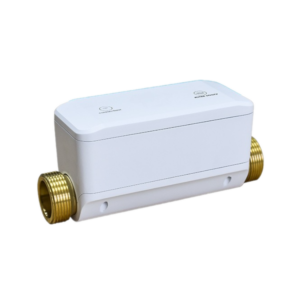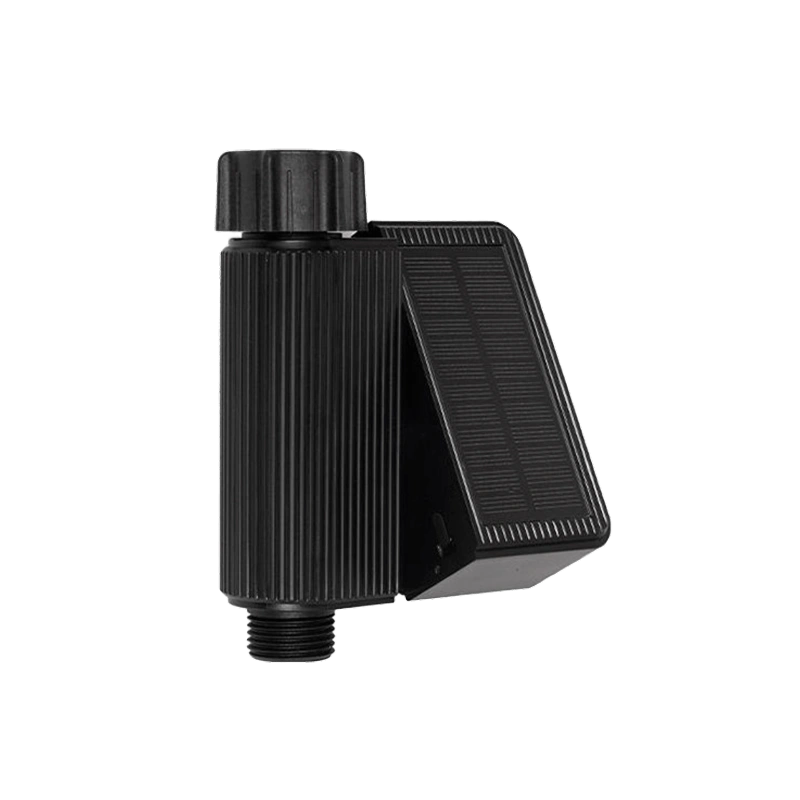Introduction to Net Energy Metering: The Journey from Inception to NEM 3.0
Welcome to the world of solar energy, a dynamic landscape where the sun isn’t just a source of daylight—it’s a powerhouse for electricity generation right on your rooftop. As we traverse the journey of Net Energy Metering (NEM), let’s unfold the solar-powered chronicles that have been lighting up homes and slashing electric bills for decades.
What is Net Energy Metering (NEM)?

Picture this: you’ve gone solar, and atop your roof lies a sleek array of solar panels, silently converting the sun's rays into clean, green electricity. This isn't just about being eco-friendly—it’s about being energy-smart. Net Energy Metering, or NEM, is the cornerstone policy that makes going solar a savvy move for your wallet too. NEM is akin to having a savings account, but instead of storing money, you’re banking energy. Any excess electricity your panels produce that you don’t use immediately gets sent back to the power grid. In exchange, you get credits from your utility company—like depositing money in the bank to withdraw later.
These solar credits come in handy on those days when the clouds roll in, or when the night falls, and your panels take a rest. The energy you’ve previously ‘deposited’ covers your electricity needs. Thus, your bill reflects only the "net" energy usage—energy consumed minus energy produced. It's a balancing act that can lead to substantial savings. In fact, some households manage to zero out their electricity bill entirely.
The evolution of NEM has been a fascinating journey. Initially, states like California set a precedent with NEM 1.0 by offering one-to-one credits for excess solar energy—meaning a kilowatt-hour (kWh) of energy you produced was worth the same as a kWh you would consume from the grid. Fast forward to today, and over 2 million customers in the United States are part of some form of NEM program, reaping the benefits of solar advancements.
The beauty of NEM lies in its simplicity and its adaptability. For instance, in sunnier months, solar systems can generate 30-40% more energy than a household uses, racking up credits for leaner times. Come winter, when the sun plays hide and seek, and your panels produce less, you cash in those energy credits. In regions like Southern California, this ebb and flow mean that with the right system size, your annual electricity bill could show more credits than charges.
But, NEM isn’t static—it’s evolved with the solar industry. From NEM 1.0’s generous incentives to the more recent NEM 2.0, we've seen changes that reflect the growing maturity of the solar market. NEM 2.0, for instance, saw slight adjustments in credit valuation, factoring in the true cost of energy production. Yet, the policy kept solar growth on an upward trajectory, maintaining the appeal of solar investment for homeowners.
The latest iteration, NEM 3.0, brings with it significant shifts that every current or prospective solar owner should understand. While maintaining the spirit of NEM, the credits for excess solar generation are set to align more closely with the current market values of energy. This adjustment acknowledges the thriving solar sector while balancing the economics for utilities and non-solar customers alike.
As we gear up to discuss the nuances of NEM 3.0, remember that the essence of NEM is to reward you for contributing to a greener grid while ensuring your investment pays back. It’s a policy crafted not just for today, but for a sustainable tomorrow. So, stay tuned as we dive into the depths of NEM 3.0 in the upcoming sections, where we’ll reveal its new features, impacts, and how it may shape the future of solar energy consumption.
The Evolution of Net Energy Metering
As we pivot from the past and peer into the intricacies of NEM’s evolution, we see a policy landscape that’s as diverse as the states themselves. The trajectory of Net Energy Metering from its NEM 1.0 infancy has been a tale of growth, challenge, and adaptation. In the early days, when solar panels were a rare sight, NEM policies like California’s NEM 1.0 were a crucial catalyst. These policies not only simplified the transition to solar energy for early adopters but also set a benchmark for other states to follow. The principle was straightforward: send your excess solar energy back to the grid and receive a credit equal to what you would have paid for that power if it came from the grid.
Fast forward to the rollout of NEM 2.0, where the policies matured alongside the burgeoning solar industry. The updated policy slightly reduced the value of the credits and introduced non-bypassable charges, which covered programs like low-income assistance and energy efficiency. Even with these changes, the incentives continued to be substantial enough to propel the solar industry forward. By early 2023, a staggering 1.64 million homes in California had installed rooftop solar systems.
NEM 3.0: A New Chapter with New Features
As the solar landscape thrived, it became evident that an update was necessary to balance the interests of all stakeholders, leading to the introduction of NEM 3.0. This latest policy iteration, which came into effect on April 14, 2023, presented a marked shift in the net metering paradigm. At the heart of NEM 3.0 is the transition from net metering to net billing, which directly impacts the solar export compensation rates.
NEM 3.0 changes the compensation structure for the excess solar electricity that flows back to the grid. Instead of receiving retail rates for this surplus energy, solar customers are now credited based on the ‘Avoided Cost Calculator’. This tool estimates the value of electricity that utilities would otherwise have to generate or purchase from other sources.
Here’s a table comparing the estimated compensation rates under NEM 2.0 and NEM 3.0 for different customer segments:
| Customer Segment | NEM 2.0 Estimated Compensation (cents/kWh) | NEM 3.0 Adopted Avoided Cost Calculator Plus Adders (cents/kWh) |
|---|---|---|
| Residential | 30 | PG&E: 2.2, SCE: 4.0 |
| Low-Income | 30 | PG&E: 9.0, SCE: 9.3 |
| Nonresidential | 30 | PG&E: 0, SCE: 0 |
As shown, the average export rates under NEM 3.0 for residential and low-income segments have reduced by nearly 75%, signaling a significant shift in the economic outlook for future solar installations.
Another critical feature of NEM 3.0 is its aim to incentivize the adoption of battery storage systems. The policy envisions a future where solar energy is not only generated but also stored and utilized efficiently. For instance, by storing excess solar power during off-peak hours in batteries and exporting it during peak demand times, consumers can optimize the return on their solar investments. This aligns with the time-of-use rates, which are higher during peak demand hours.
Implications of NEM 3.0
The introduction of NEM 3.0 has broad implications. For new solar customers, it extends the payback period, making the return on investment less rapid than under previous iterations. But it’s not all about the numbers; it’s also about shifting towards a more sustainable and balanced grid. Here’s a glimpse into how NEM 3.0 affects different stakeholders:
- Solar Customers: New adopters need to recalibrate their expectations, considering the lower credit rates for excess energy. However, integrating solar with battery storage could offset the decrease in credit value.
- Utilities: Utilities are expected to benefit from a more balanced approach, as the new policy reduces the financial impact of supporting solar infrastructure.
- The Grid: A more balanced and possibly more resilient grid could emerge as more customers adopt storage and become less reliant on the grid for energy during peak periods.
- The Environment: With an emphasis on storage, NEM 3.0 could lead to more efficient use of renewable energy, thereby further reducing the carbon footprint.
In conclusion, NEM 3.0 represents a step towards maturing solar policy. While it poses challenges for solar economics, it also encourages technological advancements in storage and paves the way for a more sustainable energy future.
The Path to NEM 3.0: A Policy Evolved**
The solar journey has been shaped significantly by policy, particularly through the iterations of net energy metering. Each version of NEM has reflected the growth and challenges of the solar landscape, addressing concerns and adapting to the ever-increasing adoption of renewable energy.
NEM 1.0 laid the groundwork, establishing the foundational principles of net metering. It enabled solar adopters to offset their energy costs with what they could generate, encouraging a pioneering wave of solar installations. With the advent of NEM 2.0, California continued to lead the way, tweaking the policy to balance the interests of solar owners with the broader energy market. Despite introducing a minimal non-bypassable charge per kilowatt-hour, which solar consumers had to pay for the energy they consumed from the grid, NEM 2.0 preserved the incentive to go solar by continuing to offer significant savings on energy bills.
NEM 3.0, however, is poised to be a game-changer. Enacted in response to the massive success of solar adoption, it is designed to integrate solar into the energy market more sustainably. The crux of NEM 3.0 lies in the value assigned to the excess solar energy returned to the grid. Where NEM 2.0 credited solar owners at near-retail rates, NEM 3.0 introduces the "Avoided Cost Calculator," which pegs the value closer to wholesale energy rates. While this reflects the true market value of energy, it implies a reduction in credits for solar owners—around 75% less than previous arrangements. The implications of this shift are significant, altering the payback period and potential savings for new solar installations.
Here's a snapshot of how the rates have changed with the introduction of NEM 3.0:
| Customer Segment | PG&E (NEM 2.0) | PG&E (NEM 3.0) | SDG&E (NEM 2.0) | SDG&E (NEM 3.0) | SCE (NEM 2.0) | SCE (NEM 3.0) |
|---|---|---|---|---|---|---|
| Residential | $0.22/kWh | $0.05/kWh | $0.23/kWh | $0.05/kWh | $0.21/kWh | $0.05/kWh |
| Low-Income | $0.22/kWh | $0.09/kWh | $0.23/kWh | $0.09/kWh | $0.21/kWh | $0.09/kWh |
| Nonresidential | $0.22/kWh | $0/kWh | $0.23/kWh | $0/kWh | $0.21/kWh | $0/kWh |
Note: These figures are simplified for illustration. Actual rates are subject to time of use and other factors.
IV. Unveiling NEM 3.0: The New Features and Their Impact
NEM 3.0 marks a significant shift in the solar landscape, introducing changes that redefine the solar value proposition. One of the most pivotal changes is the introduction of the "Avoided Cost Calculator" (ACC), a tool designed to assess the value of excess solar energy based on several factors, including the time of day and demand on the grid. This means solar owners are now credited with rates that vary hourly, leading to a complex array of possible credit outcomes.
This new policy framework aims to more accurately reflect the varying value of solar energy contributed to the grid at different times. During peak demand hours, when the grid needs more power, solar energy is more valuable, and credits are higher. Conversely, during off-peak times, when demand is lower, so is the value of solar energy.
However, the transition to NEM 3.0 doesn't just affect credit rates—it also influences the economic viability of new solar installations. Under NEM 2.0, the return on investment for a residential solar system could be realized within 5-7 years, thanks to substantial bill savings. With NEM 3.0's reduced rates, the break-even point is pushed further out, potentially extending the payback period to 9-12 years.
To ease this transition, NEM 3.0 also introduces a grandfathering period, securing NEM 2.0 rates for systems installed before the policy takes effect. This measure ensures that those who invested in solar based on the previous policy can still enjoy the benefits they expected.
Perhaps the silver lining of NEM 3.0 is the clear incentive for solar-plus-storage systems. By integrating battery storage, homeowners can store excess solar energy instead of sending it back to the grid immediately. This stored energy can then be used during peak hours or sold back to the grid at more favorable rates, maximizing the financial returns of the system.
For instance, consider this comparison:
| Time of Day | Export Rate (NEM 2.0) | Export Rate (NEM 3.0) | Export Rate with Storage (NEM 3.0) |
|---|---|---|---|
| Peak Hours | $0.30/kWh | $0.08/kWh | $0.20/kWh |
| Off-Peak | $0.20/kWh | $0.05/kWh | $0.15/kWh |
These numbers suggest that while NEM 3.0 lowers the value of direct solar exports, coupling solar with battery storage can partially offset this decrease, providing a more favorable outcome for solar adopters.
The broader implications of NEM 3.0 are yet to be fully realized. Still, the direction is clear: the policy seeks to balance the benefits of individual solar producers with the needs of the entire energy ecosystem. This includes ensuring that non-solar customers are not unduly burdened by the costs of maintaining the grid and fostering a sustainable energy marketplace for all.
Navigating the Currents: Net Metering in the Age of NEM 3.0
With the arrival of NEM 3.0, solar owners are charting new territories. This new policy paints a different financial picture for those generating solar energy. While the transition has been met with mixed feelings, the essence of solar benefits remains intact. Here’s what current and prospective solar owners need to know.
For starters, under NEM 3.0, the monthly savings might be leaner, but the environmental impact and long-term gains hold steady. A solar system is a long-term investment, and with the average life expectancy of panels spanning over 25 years, it's about playing the long game. The initial payback period may have stretched, but the cumulative savings over the lifetime of your system are still significant, especially considering the ever-rising costs of traditional electricity.
Moreover, the policy shift is a nudge towards adopting solar batteries. By storing the energy generated, you can wield greater control over its use, opting to consume it during peak pricing periods. This strategy not only maximizes your savings but also bolsters your home’s energy resilience, providing a reliable backup in case of grid outages.
The Solar Spectrum: FAQs Unfolded
As we embrace the new contours of solar policy, a host of questions arise. Here are some FAQs to demystify the intricacies of NEM 3.0:
Do net metering credits expire under NEM 3.0?
In most cases, credits will continue to roll over indefinitely, allowing you to balance out your production and consumption across seasons. However, specifics can vary by region and utility, so it's crucial to verify the details with your local provider.
Can I still benefit from net metering if I don't have solar panels installed at my home?
Yes, through virtual net metering or community solar projects, you can reap the rewards of solar energy without direct installation. These programs allow you to draw energy credits from a shared solar array, potentially reducing your electricity costs by a sizable margin.
What are the implications of adding battery storage to my solar system under NEM 3.0?
Incorporating battery storage offers dual advantages: it enables you to use stored solar energy when grid prices are high and sell back excess at more opportune times. This way, you optimize the financial returns of your system while enhancing energy independence.
Does NEM 3.0 apply to all types of renewable energy systems?
While solar is the predominant focus, NEM 3.0 may encompass other renewable sources, like wind turbines, depending on state policies. It’s important to check with your local net metering guidelines for specific eligible technologies.
How do I ensure I'm making the most of my solar investment under NEM 3.0?
To optimize your solar investment, consider pairing your panels with a battery storage system. Also, work with a solar advisor to design a system that matches your energy consumption patterns. Staying informed about the latest policy changes and utility rates is key to maximizing your benefits.
The transition to NEM 3.0 is undeniably a complex one, replete with challenges and opportunities. It’s a paradigm shift meant to integrate solar energy into the mainstream energy economy sustainably. While the immediate financial incentives may seem diminished, the long-term environmental and economic benefits of solar remain attractive. Embracing energy storage, staying informed, and working with experienced solar professionals will be vital in navigating the new solar landscape.
The journey with NEM is ongoing, as policies will continue to evolve alongside technology and market forces. As we advance, the collective goal remains to foster a clean, efficient, and resilient energy future. With thoughtful planning and a proactive approach, solar energy can continue to be a wise choice for homeowners and businesses alike, providing a beacon of sustainability for years to come.




